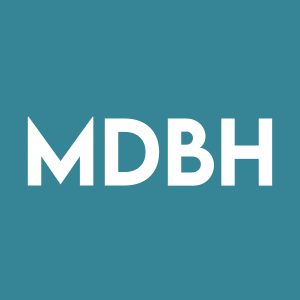New PatentVest Pulse Report Maps the Competitive and IP Landscape of the $400B Brain-Computer Interface (BCI) Market
Rhea-AI Summary
PatentVest has released a comprehensive report on the brain-computer interface (BCI) market, projected to exceed $400 billion in the US. The report analyzes over 2,160 patent families across 664 entities in the neurotechnology sector.
The market comprises $80 billion in high-acuity, early-adopting patient populations and $320 billion in potential long-term applications for neurological and psychiatric conditions. While Neuralink maintains high visibility, Synchron is establishing category leadership through minimally invasive platforms and targeted IP strategy across 10 jurisdictions.
The report highlights key players including INBRAIN, Blackrock, Precision Neuroscience, and Paradromics, who are securing market positions through differentiated technologies and IP consolidation. Academic institutions like Tianjin University, Stanford, and the University of California continue to hold foundational patents in neural signal processing and interface architecture.
Positive
- Large market opportunity: $400B total addressable market in US
- Clear market segmentation: $80B in immediate high-acuity applications
- Strong long-term potential: $320B in broader neurological applications
- Extensive patent portfolio analysis covering 2,160 patent families
Negative
- Highly competitive market with multiple players vying for IP control
- Key foundational patents held by universities, not companies
- Complex regulatory and clinical validation requirements needed for scaling
News Market Reaction 1 Alert
On the day this news was published, MDBH gained 2.28%, reflecting a moderate positive market reaction.
Data tracked by StockTitan Argus on the day of publication.
Designed for investors, board members, and CEOs, the latest PatentVest Pulse offers a strategic view of who’s winning—and why—in the emerging BCI market
Dallas, TX, April 01, 2025 (GLOBE NEWSWIRE) -- PatentVest, the first fully integrated IP intelligence and strategy firm, has released its latest PatentVest Pulse report on brain-computer interfaces (BCIs). Titled “Brain-Computer Interfaces (BCIs): Who’s Leading, What They Own, and How IP Will Decide the Future,” the report reveals how control over intellectual property—not just innovation—is shaping the future of neurotechnology.
Neurological disorders represent one of the fastest-growing and highest-need areas in global healthcare, with millions affected by conditions such as paralysis, epilepsy, stroke, and treatment-resistant depression. As traditional treatments struggle to deliver meaningful outcomes, BCIs are emerging as a next-generation solution—restoring lost function, enabling new capabilities, and shifting neurological care from reactive to proactive.
The U.S. market for BCIs is projected to exceed
This report delivers a first-of-its-kind strategic lens into the BCI market—combining deep company-level benchmarking with a comprehensive IP landscape analysis. It profiles the clinical strategies, platform architectures, and patent portfolios of the most prominent BCI players—including Synchron, Neuralink, Blackrock Neurotech, Precision Neuroscience, INBRAIN Neuroelectronics, Paradromics, Axoft, Motif Neurotech, and Science Corp—while mapping over 2,160 patent families across 664 entities to identify the companies, universities, and innovation clusters shaping the future of neurotechnology.
Key Insights:
- Strategic Leaders Are Emerging: While Neuralink commands visibility, Synchron is quietly establishing category leadership through a minimally invasive platform, global partnerships, and a highly targeted IP strategy spanning 10 jurisdictions. Other leaders—including INBRAIN, Blackrock, Precision Neuroscience, and Paradromics—are staking out defensible positions through differentiated technologies, clinical focus areas, and early IP consolidation.
- Corporate IP Consolidation: More than 2,160 unique BCI patent families are now held by companies like NeuroPace, Neurolutions, Cognixion, Neurable, Snap (NextMind), Panasonic, Arctop, and CereGate—highlighting an accelerating arms race for control over system-level intellectual property.
- Universities Still Control the Foundations: Academic institutions such as Tianjin University, Stanford, and the University of California continue to dominate early-stage innovation, holding foundational patents in neural signal processing, interface architecture, and adaptive systems—establishing the starting line for many of today’s commercial efforts.
“Neuralink may command the headlines, but it's companies like Synchron and INBRAIN that are quietly securing the innovation real estate that will shape the future of neurotechnology,” said Will Rosellini, Chief IP Officer at PatentVest. “That’s exactly why we built the PatentVest Pulse—to give boards and investors visibility into the IP dynamics that actually define market leadership, beyond the noise.”
Access the Full Report
The PatentVest Pulse report is now available. Get the data, insights, and strategic intelligence behind the companies shaping the future of BCI: Access the full report here.
For more information or inquiries, please contact info@patentvest.com.
About PatentVest
PatentVest, a division of MDB Capital Holdings (Nasdaq: MDBH), is the first integrated IP intelligence, strategy, and law firm to enable visionary companies to develop into technology leaders. By combining our proprietary database with a time proven IP diligence process and expert analysis, we deliver actionable insights on the IP landscape to help our clients make informed decisions and stay ahead of the curve. The trends and competitive insights in this report are powered by PatentVest's proprietary IP intelligence platform. Our reports keep a pulse on the key players, technologies, and opportunities shaping deep technology markets.










